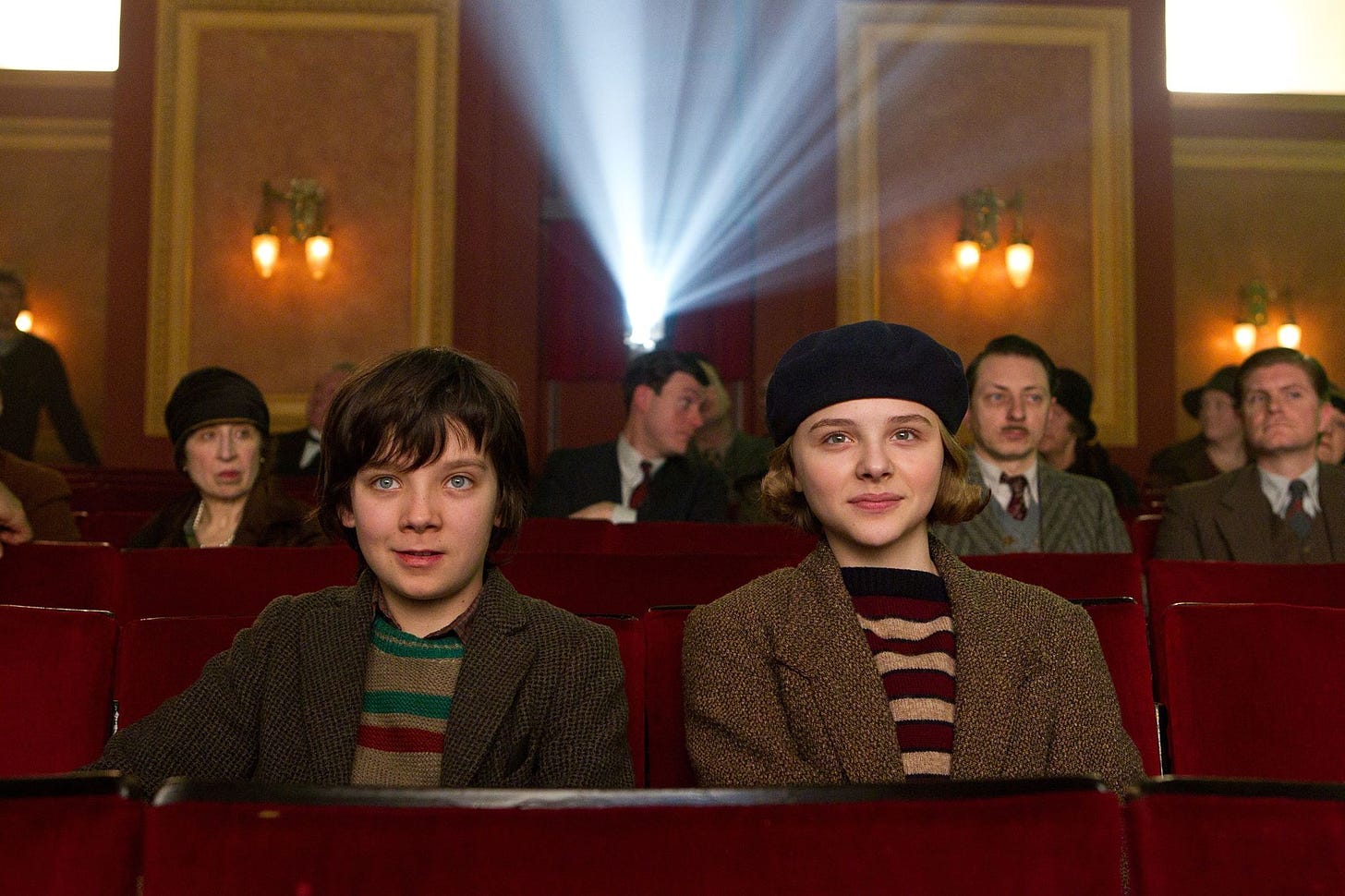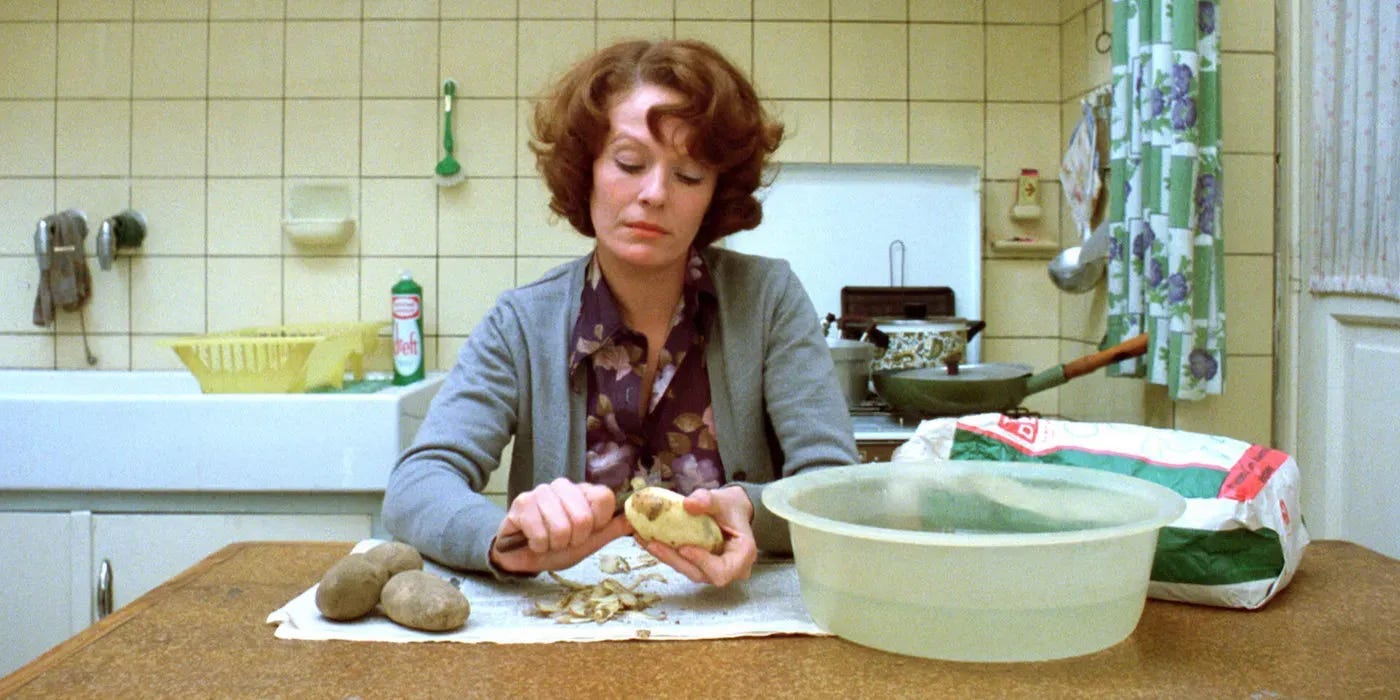Celebrating Two Years of The Reveal
Two years ago, we launched a newsletter hoping to attract readers who love movies as much as we do. Here's a brief look back as we head into year three.
A little over two years ago, we launched The Reveal as an effort to continue a collaboration that’s lasted 25 years, starting when we happened to sit next to each other at a junket screening of Good Will Hunting (we were seemingly the only ones with reservations about that film) and continuing with The A.V. Club, The Dissolve, and The Next Picture Show, the podcast we’ve co-hosted with Tasha Robinson and Genevieve Koski since The Dissolve dissolved in 2015. Our mission with The Reveal was not just to extend the sort of work we’d done before—though goodness knows, we are who we are—but to take advantage of the editorial freedom of a newsletter where we don’t have to answer to anyone but our subscribers.
In the last year, we’ve been particularly excited about the contributions our subscribers have made to this project, which has given it a life all its own. The timing of certain Substack developments, particularly the app and the introduction of the chat function, has helped spur the growth of this community at a time when social media has become a particularly chaotic and unappealing place to trade opinions and share enthusiasms. We’ve proud of the thoughtfulness and good humor in the comments and the chat, and the camaraderie that’s developed among our subscribers, which is a credit to all of you. We see this community as an important selling point for the newsletter, because such spaces are so rare to find online—and they seem to be getting rarer.
Heading into year three, the state of The Reveal is strong. We’re committed to working hard to keep the newsletter humming with features and reviews every week (and we even spiffed it up with a new background color), though we will likely have more pieces that are subscriber-only going forward. Until now, we’ve been making most of our newsletters free for the general public, with the community aspect of The Reveal being the primary benefit for paid subscribers, who have been generous in their support. But we also have to make the newsletter sustainable for us financially, which means growing the number of paid subscribers, and we can’t do that by making so much of our work free to the public anymore. We feel confident that paid subscribers get a lot of bang for their buck around here and only plan to increase that bang going forward.
Looking ahead, the next few months are going to be hopping around here. The Sight & Sound conversation project moves forward with a couple of Jean-Luc Godard works on the horizon, including Pierrot le Fou next week and all 266 minutes of Histoire(s) de Cinéma, as well as classics by David Lynch (Blue Velvet), Powell & Pressburger (A Matter of Life and Death), Charlie Chaplin (Modern Times), and Billy Wilder (Sunset Blvd.). We’ll have new entries soon, too, in our ongoing New Cult Canon and ‘80s in 40 series, and an absolute bonanza of prestige season reviews of new films by Jonathan Glazer (The Zone of Interest), Martin Scorsese (Killers of the Flower Moon), Todd Haynes (May December), Palme-winner Justine Triet (Anatomy of a Fall), Yorgos Lanthimos (Poor Things), Sofia Coppola (Priscilla), and too many others to mention. It’s going to be a particularly exciting time at the movies and we can’t wait to cover it here. (Plus, you need to keep up for The Reveal Subscriber Poll.)
Below we’ve each selected five pieces we’ve written in the past year that best represent what we do here. Once again, we could not be more grateful to you for your support. It goes without saying that this publication would not exist without you and we hope you feel your contribution is rewarded.
— Keith and Scott
Scott
The Silo Effect: If a big movie lands on a streaming service, does it make it sound? The streaming wars have been marked by expensive acquisitions and splashy productions aimed at hooking subscribers with films they can only see exclusively on a certain platform. And yet the effect is to silo them away from a larger cultural impact, as demonstrated this week by the fact that four brand-new Wes Anderson shorts based on Roald Dahl stories are up on Netflix and it doesn’t feel that urgent an occasion. I wrote about how this phenomenon undermined the election-year impact of Boys State, a Sundance hit that Apple TV+ bought for a record amount, but there are countless other cases.
‘Tin Cup’: The Zen of Never Laying Up: Ron Shelton has made the best baseball movie (Bull Durham), the best basketball movie (White Men Can’t Jump), and the best golf movie, which I wrote about here. The common denominator is his focus on flawed athletes who either never quite had the talent to make it as a pro or were simply serial fuck-ups, as Kevin Costner’s Roy “Tin Cup” McAvoy is here. But the beauty of a film like Tin Cup is that Shelton understands sports—and specifically, failure in sports—as a pathway to personal enlightenment. It’s hard to argue that Roy’s epic meltdown in the end doesn’t land him in a better place.
2022: The Year the Sight & Sound Poll Blew Up: Every 10 years, Sight & Sound releases its big critics pool and it has a seismic effect on film culture, launching innumerable pieces (including this one) about what’s in, what’s out, and what it all says about the state of criticism and the work we find particularly valuable. With a massive expansion of the voting body, emphasizing a greater number of women and persons of color than in previous years, the Sight & Sound list changed accordingly, with Chantal Akerman’s Jeanne Dielman knocking Vertigo from the top spot. I analyzed the changes in the poll and rationalized my own, oddly conservative ballot.
The Spirits of Normandy: I visited France for the first time over the summer with my family and we spent time touring the beaches of Normandy, the American cemetery, and Pointe du Hoc. It was an unexpectedly profound and moving experience to stand on ground still pockmarked by bombs yet covered by decades of growth, as nature has inevitably reasserted itself. I used the occasion to revisit Steven Spielberg’s Saving Private Ryan and reflect on how movies affect our thinking about historical events.
The Winner is Always the Loser on ‘Project Greenlight’: From the beginning, when Ben Affleck, Matt Damon and their buddy Chris Moore posed Project Greenlight as a vehicle to discover the next great director from obscurity and give them a chance to make a feature film, the show has done no such thing. It has, however, been a riveting window into its own deeply flawed production process, which ostensibly champions independence, but reflects a risk-averse Hollywood system all too well. The latest season, with Issa Rae, Kumail Nanjiani and Gina Prince-Bythewood as “mentors,” was supposed to right a lot of previous wrongs, but fell into the same trap. I wrote about why it turned out to be the most revealing season ever.
Keith
When Did January Become a Movie Dumping Ground?: An Investigation: Everyone knows that January is a month lousy with, well, lousy movies. But has this always been the case? Trying to find out took me deep into box office history, past films like Alone in the Dark, Virus, and The Couch Trip and on back to the 1950s in search of an answer.
The Robe: The Most Influential Movie Nobody Watches Anymore: Speaking of the 1950s, I decided to check out the first Cinemascope movie, a Biblical epic that everyone used to watch that’s more or less disappeared from the public consciousness.
The ’80s in 40: Heaven’s Gate: My ongoing look at movies that defined the 1980s, in one way or another, continued with a stop in Michael Cimino’s Montana, site of one of the most notorious flops and/or misunderstood masterpieces ever put to film.
“You’re Supposed to Look Good. That’s All.”: When Raquel Welch Met Merchant Ivory: This year we lost Raquel Welch, an actress who spent much of her career trying to move beyond the bombshell image that launched thousands of One Million Years B.C. posters. That included working with the team of Ismail Merchant and James Ivory. It was not a happy collaboration.
18 Years Ago, Wes Craven Made the Perfect August Movie: As part of my apparent 2023 obsession with what kind of movies come out when and why, I revisited Red Eye, a tight, twisty airborne thriller starring Rachel McAdams and Cillian Murphy. One of Wes Craven’s best films, it’s also the beaux ideal of late-summer entertainment.
The Crowded, Lonesome West of Utah’s Kane County: My family’s summer vacation took me to Kane County, site of many, many western movies, including a pair of classics by Monte Hellman, The Shooting and Ride in the Whirlwind. I wrote about those movies and what it was like to visit a place I’d previously only known for movies. Also, this piece allows me to write the entire trip off my taxes. (Dear IRS auditors: I’m joking.)








Let me second Scott’s thanks. We had no idea if this would work or not and it wouldn’t without all of you.
Thanks for all the kind words, gang. We really love doing this newsletter and being a part of this community, and unlike our previous outlets, no one can tell us what to do or when to stop. Party on, Wayne. Party on, Garth. Etc.